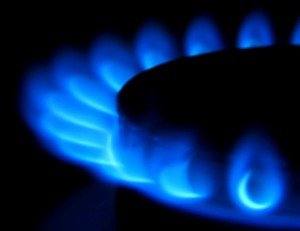A leak in the Maui natural gas pipeline has caused a large outage of gas dependent services in the North Island, affecting businesses, hospitals and the dairy industry.
 Late Monday evening, a rupture was identified in the Maui gas pipeline near White Cliffs and Pukearuhe in the Taranaki Region. It is assumed that the 13cm rupture in the pipe was caused by erosion and shifts in terrain and occurred sometime over the Labour weekend.
Late Monday evening, a rupture was identified in the Maui gas pipeline near White Cliffs and Pukearuhe in the Taranaki Region. It is assumed that the 13cm rupture in the pipe was caused by erosion and shifts in terrain and occurred sometime over the Labour weekend.
The Maui Pipeline is a 307 km long high pressure natural gas transmission pipeline running from the Oaonui Production Station (south of New Plymouth) to Huntly Power Station (south of Auckland) in the North Island. Approximately 80 percent of natural gas is composed of methane, but it also contains small amounts of other gases such as propane and butane.
A map of the Maui line can be found here.
Pipeline operator, Vector, has managed the Maui pipeline incident in accordance with the regulatory protocols established by the Gas Industry Company as Critical Contingency Operator. A copy of the Maui Critical Contingency Management Plan is available here.
Updates on the situation are available on the Vector news website.
Vector has stated that “barring unforeseen circumstances the timeframe for making the repair including welding, testing, certification and any other procedures required is estimated at between two and a half to three days. After this the pipe will be re-pressurised with gas, and then it is up to the Gas Industry Company to revoke curtailment notices and bring customers back onto the system.” (1pm Thursday 27 Oct)
The Science Media Centre contacted Associate Professor Jonathan Leaver, Civil Engineering, Unitec Institute of Technology, to provide some general background on the Maui gas line.
Prof Leaver is available for comment, please contact the SMC for details.
How can a gas pipe become damaged?
Movement of surrounding earth, corrosiveness of earth in contact with the pipe, faulty workmanship of welds, steel defects from manufacture that take years to appear.
How is a leak typically identified?
Small leaks in large pipelines can normally only be detected by smell or observation of ground effects such as associated water/soil discharge. Most pipelines of this size (870 mm diameter) are surveyed by intermittently running instruments (called pigs) to monitor the inside of the pipe for corrosion and leaks.
What are the specifications of the pipeline that was damaged (if known) e.g metal type, thickness?
I don’t know the original standard but its very unlikely that either metal thickness or steel composition was substandard at installation.
What are the hazards faced by workers repairing the pipeline?
The main danger is from residual gas fumes and stray electrical currents from equipment that could ignite.
Have there been similar events in New Zealand in the past?
Not during my term as Chief Petroleum Inspector 1991-1997.
Looking forward, do you see a need for improved pipe line infrastructure?
A cost-benefit study needs to be undertaken on whether either full or partial duplication of the existing Maui pipeline is justified. Factors to be considered in this are the threat to human life due to the loss of a key energy source for heating and cooking, and the economic cost.
What size of backup pipe is needed and whether it is needed over only some parts of the network more likely to suffer earth movement or more aggressive corrosion would be decided from the study.
If substantial gas production is undertaken at Huntly (through underground coal gasification) would this provide a significant distribution of sources and alleviate reliance on the Maui gas line?
I was associated with the 1994 trial . The coal seams beneath Huntly are not in smooth bands. This makes production of consistently high volumes of natural gas difficult due to problems maintaining a consistent subsurface burn.
One possible benefit of UCG at Huntly is that it may be possible to create an underground natural gas storage reservoir that could be drawn upon at a high flow rate for a short period in the case of a similar pipeline failure.